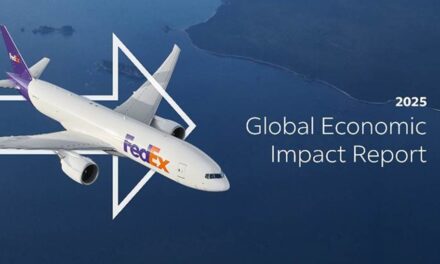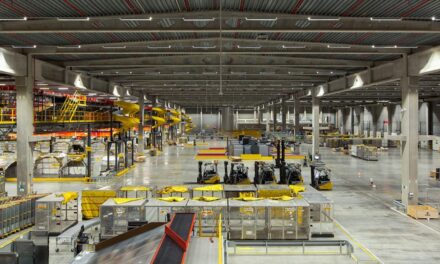
Mexico & Latin America: Primed for growth
Key figures from the industry gather next month in Mexico City for the World Mail and Express Americas Conference, with prospects for future growth in the region looking promising. With the global economy rebounding, host country Mexico and the rest of Latin America has seen a year of investment since the Americas conference in Miami.
Leading operators including UPS, DHL and FedEx have been making high-profile investments in services and infrastructure to respond to strong customer demand.
Investment in logistics and processing infrastructure, ground and air transportation have been made to expand coverage on the ground and extend links to the rest of the world.
Jose Acosta, vice president of strategic development for UPS Americas, suggests that as the world emerges from the downturn, the region is well-positioned for growth.
Acosta said: “The economic growth is very solid in Latin America – particularly in the major economies, Brazil, Mexico, Argentina, Chile, the Caribbean. They did not suffer as much as others in the world recession, although Mexico did suffer being so close to the US.”
Inflationary pressures may now be of some concern in the region’s economies, but the prospects for trade in the next few years seem promising, with more Free Trade Agreements on the way with the US and between Latin American countries.
The planned expansion of the Panama Canal also looks set to drive further trade growth, its capacity to be doubled by 2014, while Brazil’s economy will benefit from hosting both the Olympics in 2014 and the FIFA World Cup in 2016.
“A lot of exciting things for the Latin American region,” said Acosta.
Local links
National postal operators have been working to respond to the growth in the economy by improving their services in the region; though to some degree governments have seen it necessary to push for stronger monopolies in order to encourage a better, more universal coverage of services.
This has been met with disapproval from the private sector, which continues to push for a level playing-field. Companies warn that artificial devices to protect national postal operators would mean promoting inefficiency.
But the industry’s efforts working with governments in the region have not only been about lobbying against restrictive regulation. International operators have been working with them, along with local businesses, to help promote trade and thereby boost local economies.
Acosta, who saw his role at UPS change from VP of operations for the region to a more strategic development focus in 2009, has been particularly focused on helping local economies to grow and develop export markets.
As far as pressing governments to improve trade links, Acosta says one of the key areas now needing attention is the current state of customs procedures and infrastructure.
In particular, he stresses the need for significant investment in technology if the region to help local businesses compete in the global economy.
He said: “Customs procedures in Europe and Asia are now very automated. In Latin America, it’s manual, it’s hand-processed, it takes time and it drives up the cost of trade and makes it very difficult for businesses.”
While national operators grapple with time-honoured challenges of reliability, security and affordability, the private sector is in many cases working with them hand-in-hand to improve their services.
Brazil’s Correios, which already has the strongest monopoly among national posts in Latin America, is set to run a public tender process this year to bring in more private sector support. Among the areas it is looking to improve is its air cargo network.
UPS offers national posts the opportunity for better access to markets outside their own thanks to its aircraft fleet – the ninth largest in the world, with 17 flights into and out of the region each day.
“It means posts can have time-sensitive international services,” explained Acosta. “When you are a post waiting for the UPS flight, the first thing that comes off is the mail. It’s not like a commercial airline where you have to wait for the bags to come off first.”
Vertically-integrated
The global players are paying close attention to Latin America and Mexico, with a number of the international brands looking to increase their presence on the ground in the region at the moment.
The ultimate goal for the likes of UPS, FedEx and DHL is to offer more vertically-integrated services for customers there, making life easier for businesses shipping domestically and internationally.
Investment in the region has been made with the goal of simple shipment solutions for customers, allowing them as far as possible to access the services they need through a single provider.
FedEx says offering customers a single provider for all of their shipping needs is one of its “most important strategies” at the moment, which it is implementing by expanding its portfolio of services and investing in infrastructure.
The company has expanded its international services and time-definitely delivery options in the past two years, and spreading coverage across Mexico such as through its partnership with Office Max Mexico, which has added 51 more retail locations.
Building on its FedEx Express National presence, it is now in the process of acquiring Mexico’s Multipack, to substantially extend its coverage.
The deal is expected to close in the second quarter of 2011, bringing FedEx a network spread through all 31 Mexican states including 48 distribution centres, 13 warehouses and more than 500 retail outlets across the country.
Juan Cento, president of FedEx Express Latin America and Caribbean, said: “As the Mexican market continues to evolve and expand, customers increasingly seek a single provider of solutions for their domestic and international transportation and logistics needs to more efficiently manage their supply chains.”
UPS is another company spending to improve its coverage and efficiency in the region, taking on extra or expanded aircraft in key areas of demand like the Merida area in the south-east of Mexico, and Tijuana area in the northwest.
On the ground, Acosta says his company has expanded its presence outside the core metropolitan areas like Merida and Mexico City, with 40 more centres in the rest of Mexico to offer better access to more customers.
In the rest of Latin America, UPS is also putting in the investment in order to become a more significant player in the market, including a new $20m facility in Puerto Rico and further plans for similar new facilities elsewhere.
“We are going to continue to invest, we are growing to become a significant player in this market,” says Acosta. “We are the one entity that is truly vertically integrated in the region; it means a simpler logistics system and gives us the competitive edge and a very competitive price.”
Regional operators, too, have been investing in their infrastructure to respond to the increasing customer demand. Estafeta put plans in place in 2010 to increase its investment in its homeland market by 66%, to $25m for the year.
In particular, half of its investment was allocated for renewal and expansion of the company’s vehicle fleet, along with $8m for technology development.
Estafeta’s expectations have been that its investment programme would help bring a 6% growth in sales.
Rise of the Internet
While the state of the economy gives cause for optimism in the long term, it is the rise of internet use that is particularly driving growth in the express market in Latin America at the moment – though it will inevitably hit the postal side of the industry.
While the region is home to 8.4% of the world’s population, Latin America currently accounts for about 10.2% of the world’s internet users already.
In the last decade, growth in internet use in the region has been a phenomenal 1,024.9%, more than double the average for the rest of the world.
In Brazil, a key pledge for the new government his year is to spread the availability of broadband services, an area that is part of the Correios spread of services.
In Mexico, too, the growth of internet services has been significant, with the International Visual Communications Association anticipating that Mexico’s internet users are set to grow from 35m to 43m by 2012.
Juan Tamariz De la Fuente, logistics director at AMPM’s courier and express division, Pronto Repartos Rápido, says the challenges are “huge” in responding to the boom in online e-commerce in Mexico.
He said: “The volume of express packages generated from B2C operations is increasing rapidly in México, which is a result of the growth of a more competitive segment of internet service providers that allows more people to buy products on the web and create the need of the delivery of that products.”
Pronto has been operating since 2005, supporting its express service with in-house developed tracking systems. As well as providing internal services for the ampm group, processing and delivering of around 25m pieces a month, the company is also providing tailor-made services to large clients from Telmex and Nextel to Bancomer, DHL and CEMEX.
Healthcare
As Latin American economies and societies continue to develop, the healthcare industry is emerging as a key area of opportunity for shipping companies in the region.
Many of the major players are building up their healthcare offerings in a segment requiring specialised temperature-sensitive and time critical logistics.
FedEx and UPS both highlight the importance of this market segment to their operations in Latin America, where the pharmaceutical markets in the top eight economies in the region were worth more than $30bn in 2009.
Expectations of annual growth rates of more than 10% over the next few years has been attracting major drug companies like GlaxoSmithKline and Pfizer to buy into the region through acquisitions.
In Mexico particularly, efforts to increase universal medical coverage means growth opportunities for healthcare logistics.
DHL Mexico has been building its healthcare service in Mexico under a sector-specific strategy the past three years, the company stating that Mexico is one of the world’s top ten markets for life sciences and healthcare industry.
Last year invested $15m, including $9m in a new warehouse unit in Mexico City that nearly quadrupled its capacity to store goods in a temperature-controlled environment. The 13,000 square foot facility can now handle more than 51m doses.
The company is intending to expand its services in other industry segments in a similar sector-specific manner.
World Mail and Express Americas
How the industry responds to the changing society in this region will be under particular scrutiny next month, at the World Mail and Express Americas Conference & Exhibition.
A particularly strong line-up of experts from Latin America will be on hand to discuss the challenges and opportunities ahead – for both private sector companies and public sector operators – in an era of changing communications, technology and economic development.
Under a theme of staying relevant in a more complex world, speakers including Jose Ignacio Garcia Olvera, the director general of Correos de Mexico and Juan Ernesto Vargas Uribe, president of the Colombia’s Post, will discuss how they are meeting the challenge and customer expectations.
There will be the chance to hear from Multipack’s director general Gilberto Garcia Guevara, as the organisation looks to its integration with FedEx, along with a spotlight on competition in the package and specialised deliveries segments with a presentation from Juan Tamariz of AMPM’s Pronto.
Delegates will also be able to find out about the situation in Costa Rica, the Dominican Republic and Chile, as well as the latest on the market in North America and technological developments in the industry as a whole.
The World Mail and Express Conference and Exhibition 2011 is being held at the Camino Real Polanco Hotel in Mexico City from February 7-9, 2011. For more details and the chance to book, click here.












